
















































Having left Eddie Jordan, it was a matter of out of the frying pan and into the fire, as I joined Tom Walkinshaw Racing (TWR) soon after. The company was different, but there were still some stories to tell. At TWR, all the drivers were being paid to drive so the performance of the car in a racing situation was the major criteria. It was incredibly hard work, but the success it could bring became almost addictive.
I was fortunate to be surrounded by a really hungry team and some great drivers. In Tom’s eyes, wins were what mattered, and consequently I was given a bonus with each one of them, but absolutely nothing for any minor placings. That suited me just fine, and I was able to return the faith Martin Brundle had shown in me with a World Sportscar Championship, and wins at Le Mans and Daytona, which went some way to make up for what happened in Formula 3 in 1983.
Tom was also able to take me into a whole new road car world with the Jaguar XJ220 project, where I was able to learn a completely new set of skills. I mean, what real petrolhead wouldn’t want the opportunity to develop what was at the time the world’s fastest road car?
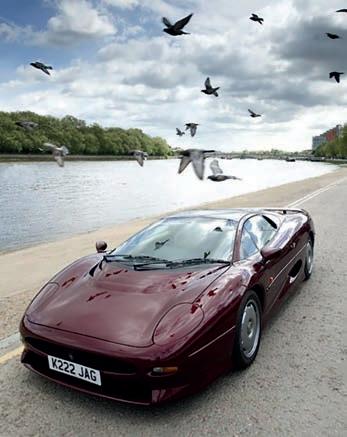
However, the gulf between racers and road car people was brought home to me the very first day I sat behind my new desk. My certification manager’s very first question was to ask if we should hold a ‘worst case’ meeting, something unheard of in motorsport! There, you just had to get it right, as the timeframes didn’t move.
The next shock was driving a rough prototype, finding the gear ratios all wrong and being told I could have a new set in ‘about four months’. I was used to a ratio change in about 15 minutes!
Nevertheless, the car was going to go like a racecar, and so I had to apply some racecar principles to the prototype builds and testing to get the car to engineering sign off by the end of 1991.
To achieve this, I brought in a key worker for each of the five prototype cars for testing, and had some of my number one mechanics from racing come and join me.
One of the many jobs I was given was to drive the prototype for the Sunday Times Magazine supplement, Quality Cars. If I look petrified in the image, it’s because I’m driving what was the only running car of its type at the time virtually underneath the tailgate of a photographer’s Range Rover at 50mph with zero visibility. I can vividly recall that experience to this day, and can honestly say it was much scarier than driving the car at 200mph for the very first time.

Much of the car’s basic testing was done at the Millbrook test facility near Bedford, UK and I would regularly drive the cars there and back from Bloxham, just south of Banbury. Tom would often drive the cars too to check on progress… and just to enjoy himself.
Meanwhile, my old boss, Eddie Jordan, was moving into his new factory at Silverstone, which I really wanted to see. And he really wanted to see this new road car I was playing with. So, as Silverstone is almost, ahem, on the way to Millbrook, I dropped in one morning to look at his new facility. Eddie, of course, wanted a go in the car, and asked if we could take it back to his old workshop to show designer, Gary Anderson.
I agreed, and Eddie drove sensibly… up until we were at the main entrance. He them hit the gas and signed the road with a huge 345-sized eleven, which rather unexpectedly announced our presence.
The following day, I had a message from Tom’s secretary asking where all the development cars had been the previous day. It appears someone had told Tom they thought they heard, and saw, one of his new cars at the Silverstone circuit.
Little did I know that Tom was chairing a meeting of the BRDC at the time of the offence, in an office right at the old entrance to the circuit.
I hastily made a list of where all the cars were that day and, fortunately, nobody thought to verify the Millbrook check-in times, or else I might have had some explaining to do.
What real petrolhead wouldn’t want the opportunity to develop what was at the time the world’s fastest road car?
 By ANDREW COTTON
By ANDREW COTTON
It has been a much-anticipated return to top-level sportscar racing for Ferrari, and its new prototype, the first since 1973, has already delivered. Unveiled at Imola, near to the Ferrari factory, and with a number of Ferrari employees in attendance, the 499P that carries the manufacturer’s long-term endurance racing hopes was revealed to the world for the first time.
Ferrari has long been present in GT endurance racing, but it has been more than 50 years since it last won at Le Mans. In the interim, the brand has been successfully represented in GT racing by the Squadra Corse arm of the company for over 20 years, in partnership with Amato Ferrari’s AF Corse team, and that relationship will continue with the new prototype.
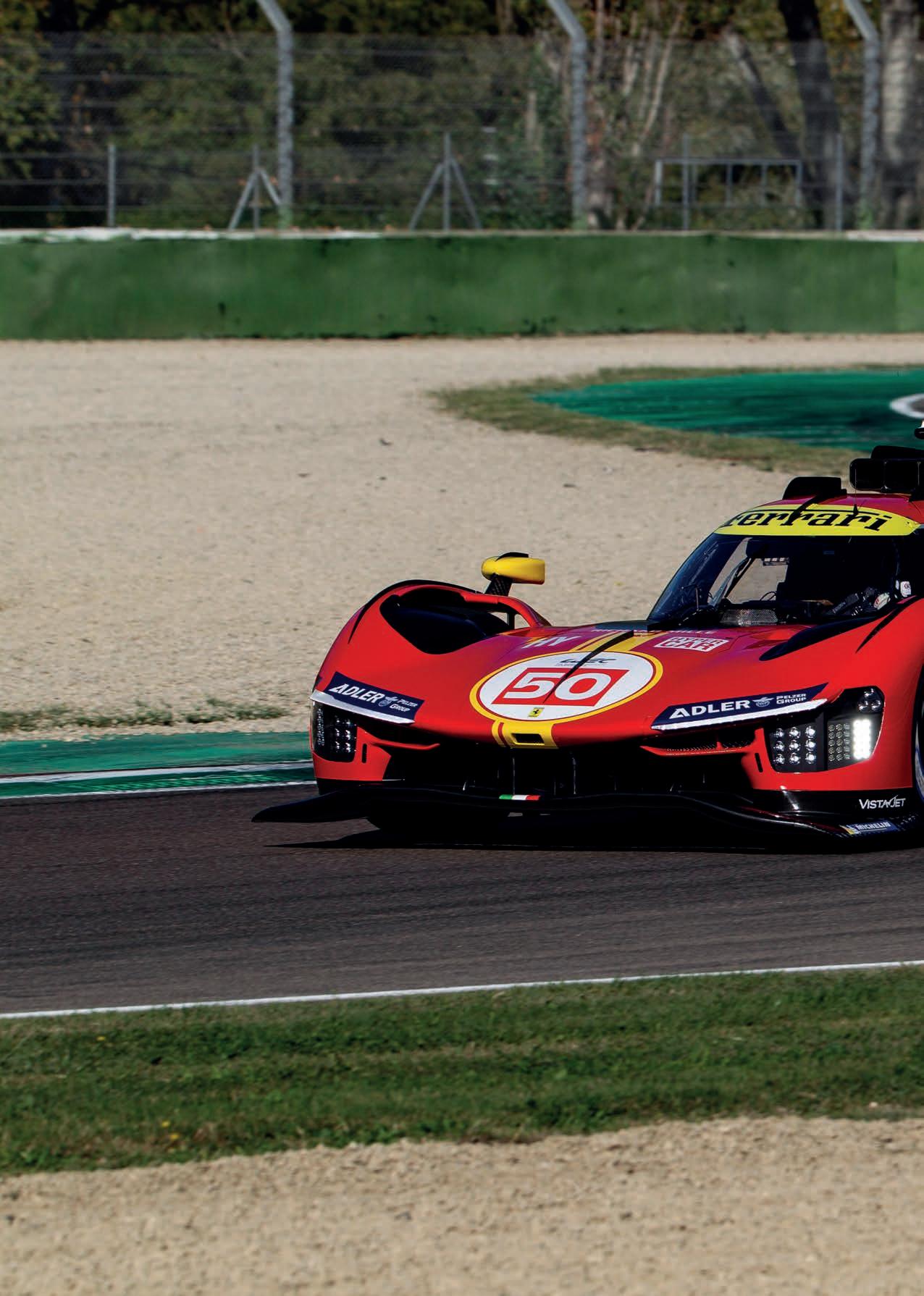
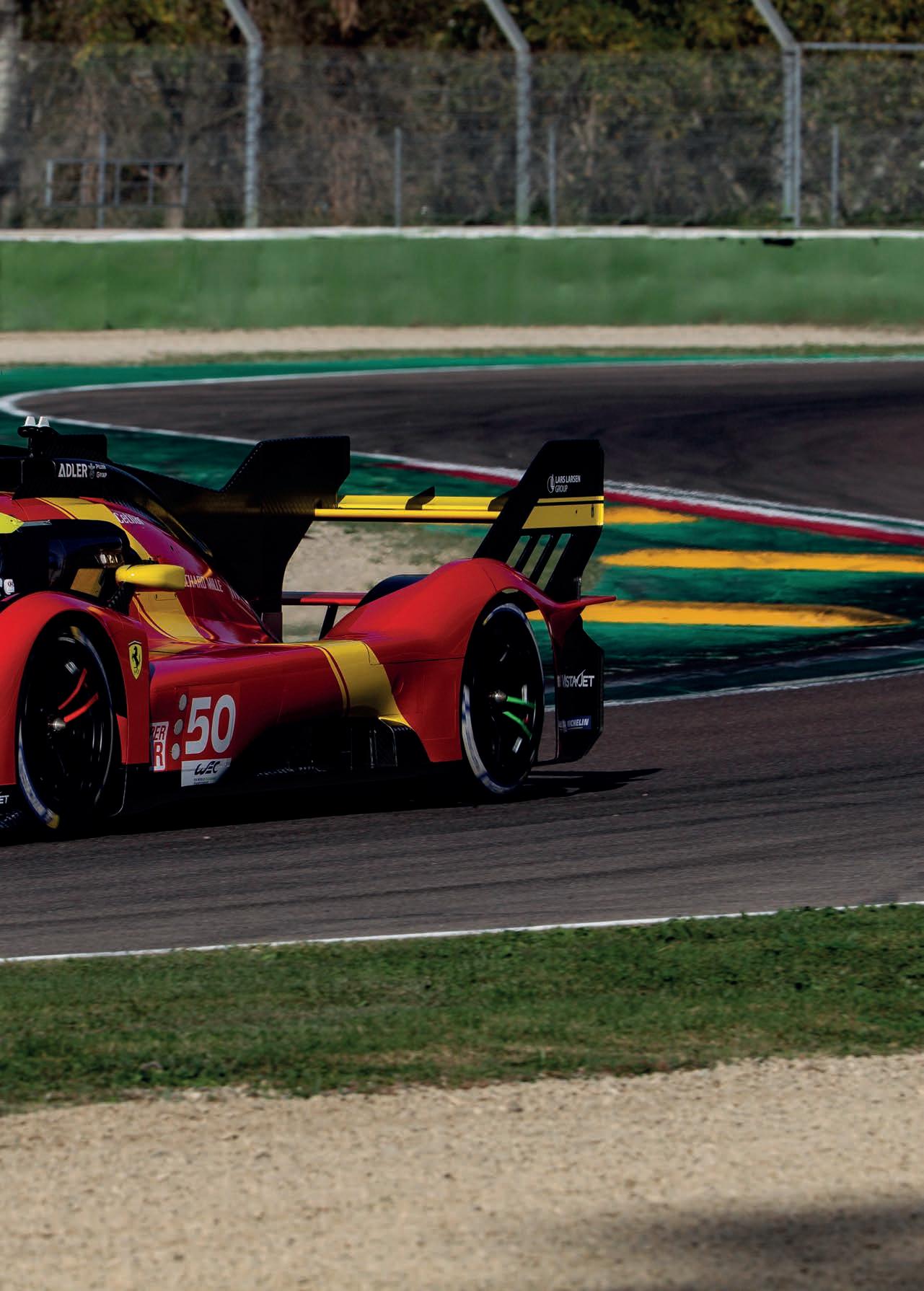
World Championship titles have gone the way of the Scuderia in GT racing, but the chance to step back into top-flight prototype racing came with the new set of regulations that limited development scope and reduced cost, at a time when Ferrari’s racing activities were changing due to external factors.
The first of those was that the Scuderia took endurance racing seriously enough to bring the design and development of the GT3 car in house for the first time. Its last factory foray into GT racing came with the 575 in 2004, but that car was not a patch on the Prodrive-built 550 Maranello that dominated GT racing in the early noughties.
Since then, Ferrari’s GTE and GT3 cars have been designed and built by Michelotto, but for the latest 296 programme, which was unveiled in July 2022, the design part of the operation was brought in house and the build outsourced to ORECA, which already claims to have pre-sold more than 200 cars before the first has even been homologated.
The second factor was the Formula 1 regulations changing, with a cost cap forcing teams to re-think all elements of their structure. Ferrari consequently had engineers left over from its F1 programme although, according to the team, only 30 of them are now working full time on the Le Mans prototype project. However, that’s not to say other departments are not involved.
From design to hybrid system, from aerodynamic and simulation to engine development for production cars, the various groups within Ferrari are feeding into each other to lift the manufacturer’s racing activities as a whole.
The final part was that the Automobile Club de l’Ouest and the FIA came together and finally produced a set of regulations that suited manufacturers wanting to return to Le Mans, including Ferrari. The top-class prototypes now have to hit a certain point on the lift / drag graph, are performance balanced within that window, and homologation is effectively frozen for five years. That was all expected to make racing cheap(er), which was attractive.
Prior to making its return to sportscar racing, the manufacturer stated that it would focus its attention on fixing the issues it faced in Formula 1 first, before adding the distraction of another programme. However, although the Scuderia has yet to win a Formula 1 World Championship since Kimi Raikkonen in 2007, it seized on the chance to join the FIA World Endurance Championship for the 2023 season, and to compete in the Centenary of the Le Mans 24 hours.
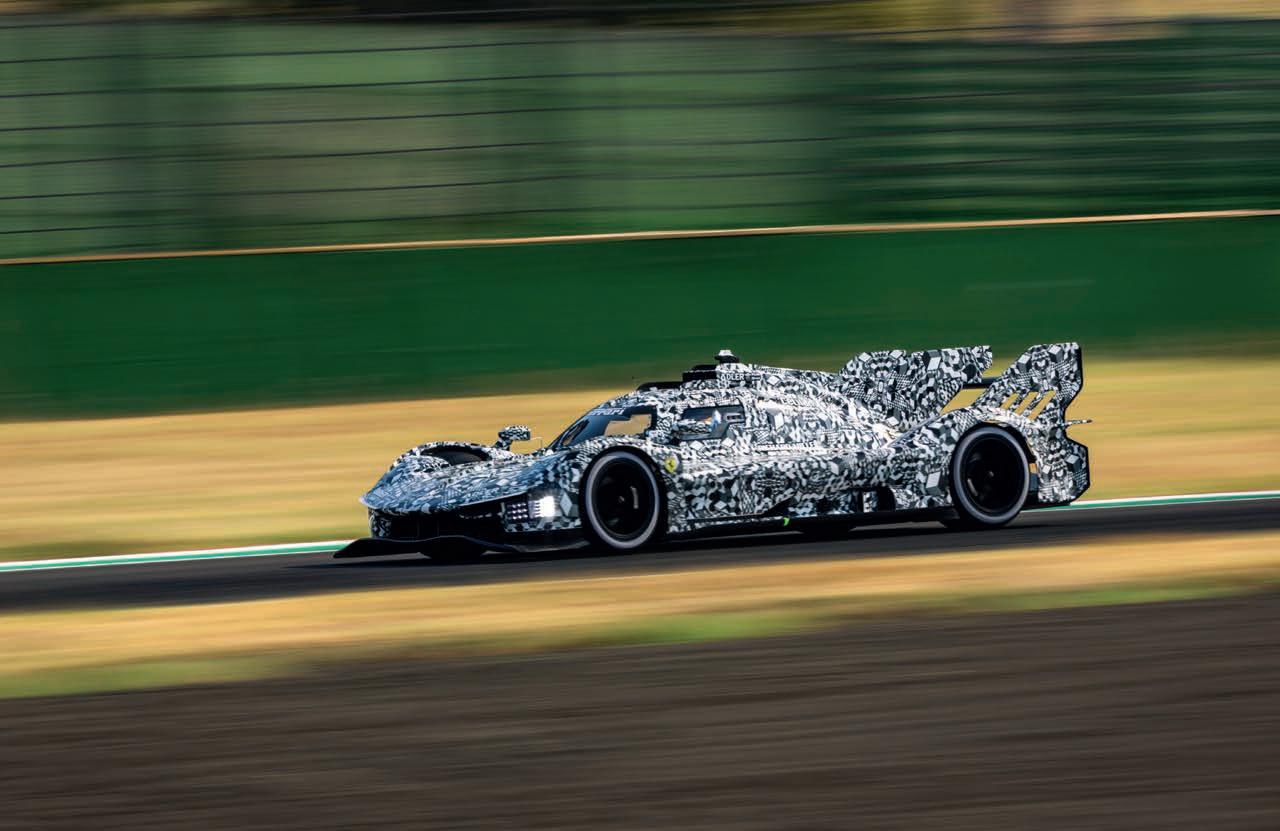
The aero regulations allowed the design team to work with Ferrari’s Centro Stile studio without penalty. Rather than search for outright performance, the point on the lift / drag graph is relatively easy to hit, and the performance balancing system means road
car styling cues don’t have a large effect on overall performance. The complication of that is the window leaves very little room to move within, and the car must remain within that window of performance in all conditions.
Ferrari has yet to homologate the prototype, and says it won’t have that process completed until the end of 2022. At that point, homologation will be fixed for five years (just five performance updates are allowed within that timeframe), and performance testing will begin ready for the competition debut at Sebring in March 2023.
All that being said, the launch car was nothing short of extraordinary. Its aerodynamic complications surpassed what we were told to expect. Under the nose is a series of wings, much like a Formula 1 car, mounted centrally and cascading down towards the front splitter in steps.
The launch car was extraordinary, its aerodynamic detail surpassing what we were told to expect in terms of complication


From its agressive, Formula 1-style front wing through its longitudinal strakes to the huge rear wing, the 499P’s design is all about aerodynamic stability and reducing tyre wear
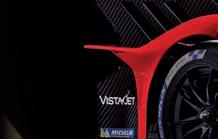

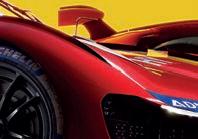
The underside of the car looks like a Formula 1 tub, with the leading edge under the driver seat extended like a tea tray. Tight packaging over the radiators and sidepods suggest that much of the cooling flow comes from underneath, rather than over-body airflow, and Ferrari is particularly proud of its looks.


The team says it has not focused on outright performance as Balance of Performance would take care of that anyway. Instead, it has concentrated on creating a car with a wide operating window. Not only will that help over the course of a season in the WEC, but also in IMSA if the car does run in the US. Convergence between the European and American regulations mean this is now possible, and Ferrari has confirmed it is on the agenda in the near future.





















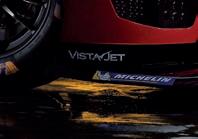

‘If you analyse the performance window, the range is not that big, so what is important is to minimise as much as possible the aero sensitivity and how it is in the corners,’ says Ferdinando Cannizzo, head of Ferrari Attivita Sportive GT. ‘Of course, we have to guarantee the aero stability. As long as you are constraining the efficiency of the car, that is the most important thing.

‘We tried to design the car for a very wide range of tracks, considering we have to go to the US for the WEC. I hope the car can digest this standard of tracks, and we will discover that soon.

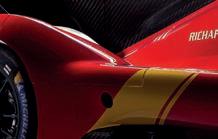




‘I think that as an engineer, what we can do is have a car concept and suspension that hurts the tyres the least. We are looking for consistency and, even though the tyres are facing aggressive asphalt, the wear [should be] less than our competitors. For this kind of stuff, the simulation tools are not enough. We need some real experience to see if what we designed is actually there.’
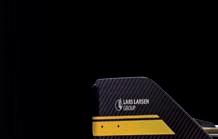
What is striking about the car, initially, is the longitudinal strakes over the mirrors, front wheelarches, nose and roof. Plus the fin and the large rear wing endplates. Ferrari says these are to help correct the car in high yaw angles, as there are strict regulations surrounding stability in the event of a spin.
However, the large fin on the engine deck and the enormous rear wing end plates, in contrast to other cars such as the Peugeot, suggest these strakes have other functions. The likelihood is they will help the car on turn in and in high-speed corners, such as the Porsche Curves at Le Mans.
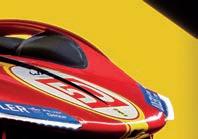
Rivals note that they, too, experimented with strakes over the front wheelarches for this reason, and suggested in this case they were more in place to help the airflow correlate to the underfloor.

At time of writing, Ferrari has yet to confirm whether or not it will have its permitted single-adjustable aero device at the front of the car, or at the rear. It can choose one, and with such a complicated arrangement under the nose, it is easy to
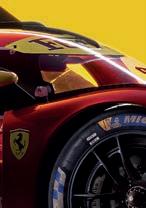
see how it could trim the car with ease using either of these devices. However, insiders suggest it more likely the team will select the rear wing as it’s easier to access.
That is something of a surprise. The tyre regulations changed at the end of 2021, and cars that were homologated before the end of the 2022 had the option of a narrow front tyre and wider rear to match the LMDh cars that will race in IMSA, or the same size tyre all round. Toyota switched from the latter option for this year’s car as the hybrid deployment criteria changed, but Peugeot did not, and is the only car to run the same size tyres all round.
By regulation, then, with the car not racing until 2023, Ferrari had to take the narrow front, wider rear combination. However Toyota, in particular, noted the team had focused its set-up this year more on protecting the front tyre than the wider rear to maintain performance over a stint. The thinking is that the wider rear largely takes care of itself. A front-adjustable wing might make caring for the narrower front tyre a bit easier to manage
Michelin is currently involved in a massive tyre testing programme for next year. Working with all the manufacturers, it is evolving a tyre with a higher bio content than this year’s version, and is continuing to push for no tyre warmers in 2023.
Tight packaging over the radiators and sidepods suggest that much of the cooling flow comes from underneath, rather than over-body airflow




























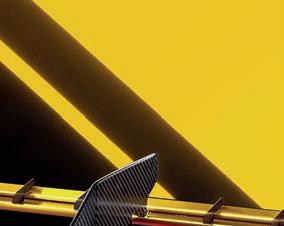
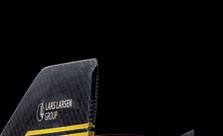


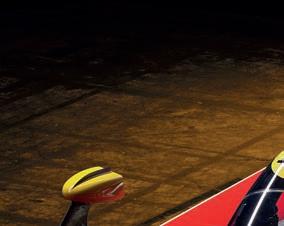


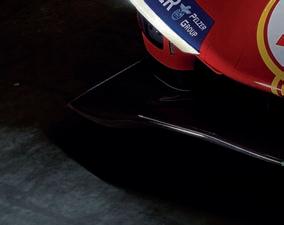
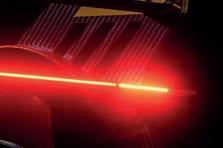

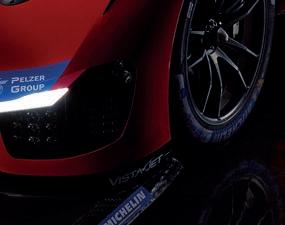
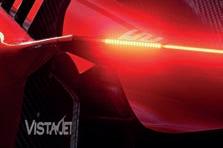
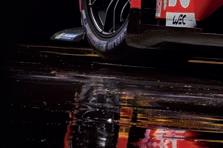

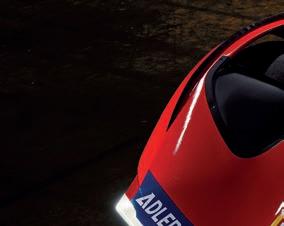

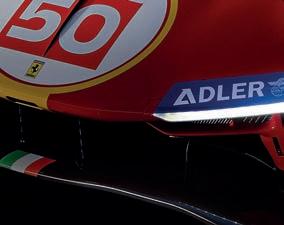
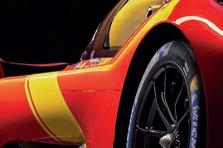
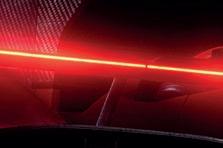
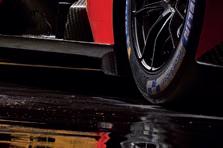
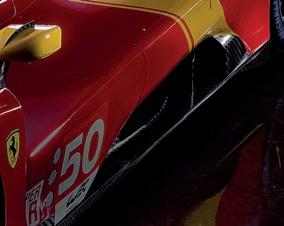
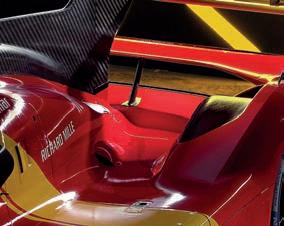
The car has been designed to suit a wide range of track and track surfaces as the new regulations allow prototypes to race in both the WEC in Europe and IMSA in the United States
Ferrari has not yet confirmed if it will use its single permitted adjustable aero device at the front or rear of the car, but it is thought likely the manufacturer will use the rear wing
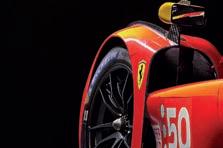
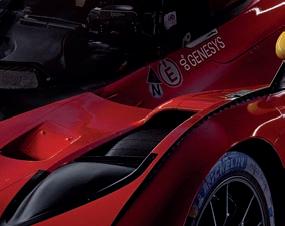
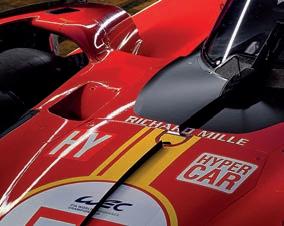
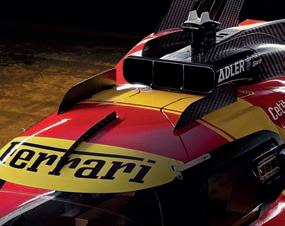
A decision on that is expected in December this year but, if it happens, the idea is to increase the lap time penalty for taking on new tyres, encouraging teams to put more mileage on older tyres.
In order for teams to be prepared to do that, though, the tyre companies need to come up with a different chemical formula to help heat the tyres quicker, particularly in cold temperatures such as the night time at Le Mans. But if they do this, drop off over a stint will then be higher.
Either way, tyre management will be an even more critical part of overall car performance in the coming years.
None of the teams have yet seen, or tested, the new 2023 tyres, and Ferrari says this will be a priority in its winter testing. Before that, though, the first step in the car’s development was to confirm the tyre in simulation, while the first phase of track testing was to correlate what the team found in simulation with track data, and then tune the simulator accordingly.
‘If you have your tyres that you can develop, you can have a higher degree of freedom to play with,’ says Cannizzo. ‘[With this regulation] you need to match your design to the existing tyres. One of the most important jobs was to ensure the model used for simulating the tyres in the simulator were correlated with the track. That was our first priority, to clarify, and for now the results
are interesting. We then started testing and feeding back, tuning our simulator.
‘We are trying to use the tyres as soon as possible. At the moment we have just tested with the existing option. That is good when we are more caring about managing the car, increasing the reliability level of the systems and parts in small details. But then for sure at some point we need to start pushing in a proper way, and we need to have the right tyres to do so.’
At the launch, Ferrari was busy explaining the nomenclature of the car’s name; 499 is one sixth of the engine capacity, said the Scuderia, and it confirmed the engine was based on the architecture of the 296 GT3. That makes it a 3.0-litre V6, with the turbos mounted inside the vee angle of the engine, but that’s pretty much where the similarity ends between the two engines.
‘The base is the 296 engine,’ confirms Cannizzo. ‘It shares the same architecture as the 296, so 120-degree vee and the turbos inside the vee, but [in the prototype] the engine is stressed. The design and structural requirements are different [compared to the GT3]. You need to carry the gearbox and suspension. Everything is passing through the engine structures.
‘All the rest is different. The turbochargers are different, inside is different, and the weight is unbelievably different.
‘There is no reward for using a productionbased engine [from a regulation or performance perspective]. This is an engine derived from production, so it shows that the technology in the road car is already looking like it is ready to race. We had a quick look at a bespoke engine, but we never considered it in terms of reality.’
Sharing the configuration of the engine between GT3 and prototype is therefore more of a marketing ploy, but Cannizzo says that knowledge gained from the reliability testing and application of the hybrid system will be fed back into the road car department with a view to perhaps improving reliability.
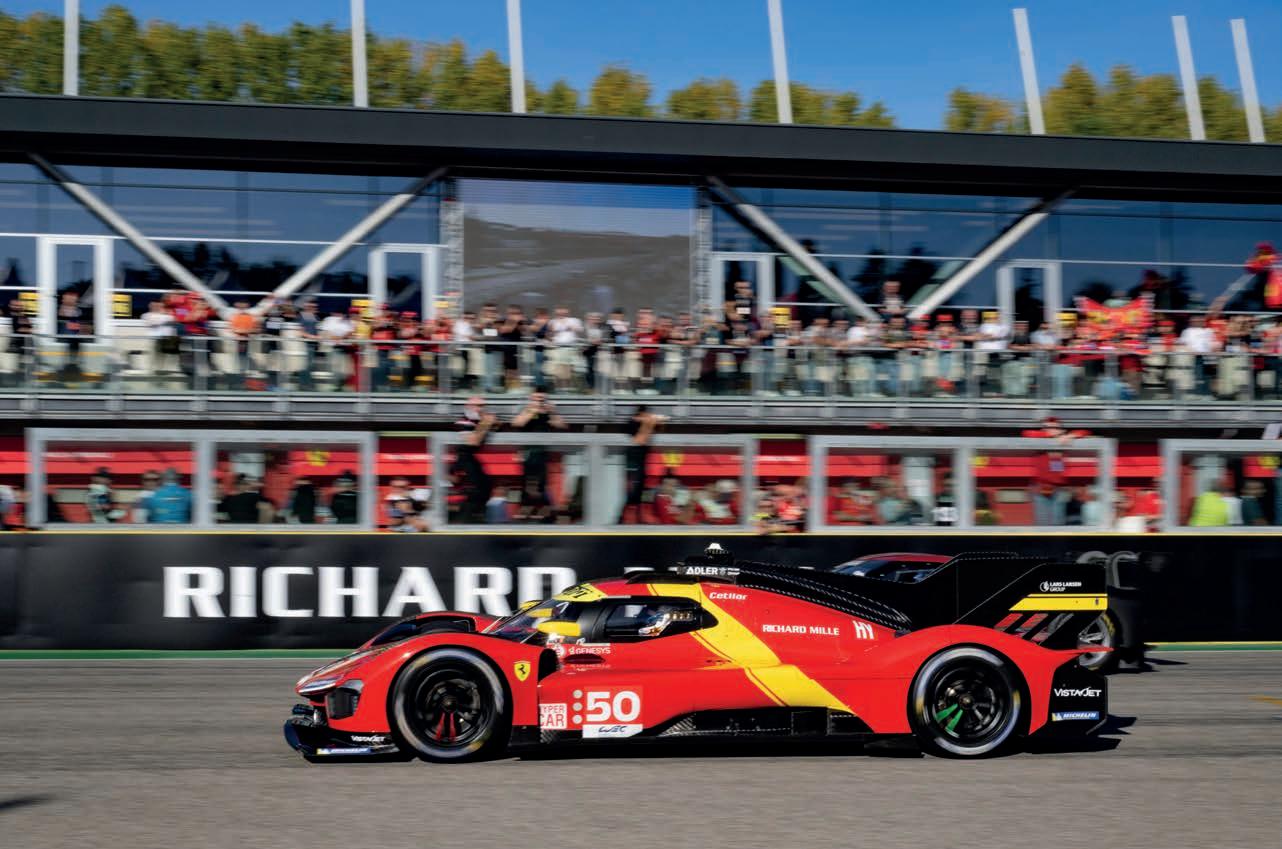
Further back from the engine, Ferrari considered using an existing gearbox to ensure the car was reliable from the start, but in the end had to go with a bespoke unit to mount the suspension properly, and to meet the mandated 75kg minimum weight limit.
‘At some point we need to start pushing in a proper way, and we need to have the right tyres to do so’
Ferdinando Cannizzo, head of Ferrari Attivita Sportive GTAlthough a bespoke engine was briefly considered, using the 3.0-litre, V6, 296 engine as the base was more cost effective, and enhances the company’s road car credentials to boot
Take cutting-edge wind tunnel technology.Add a 180 mph rolling road. And build in the best in precision data acquisition capabilities.When we created the world’s first and finest commercially available full-scale testing environment of its kind, we did much more than create a new wind tunnel. We created a new standard in aerodynamics.
180 MPH WITHOUT MOVING AN INCH 704-788-9463INFO@WINDSHEARINC.COM
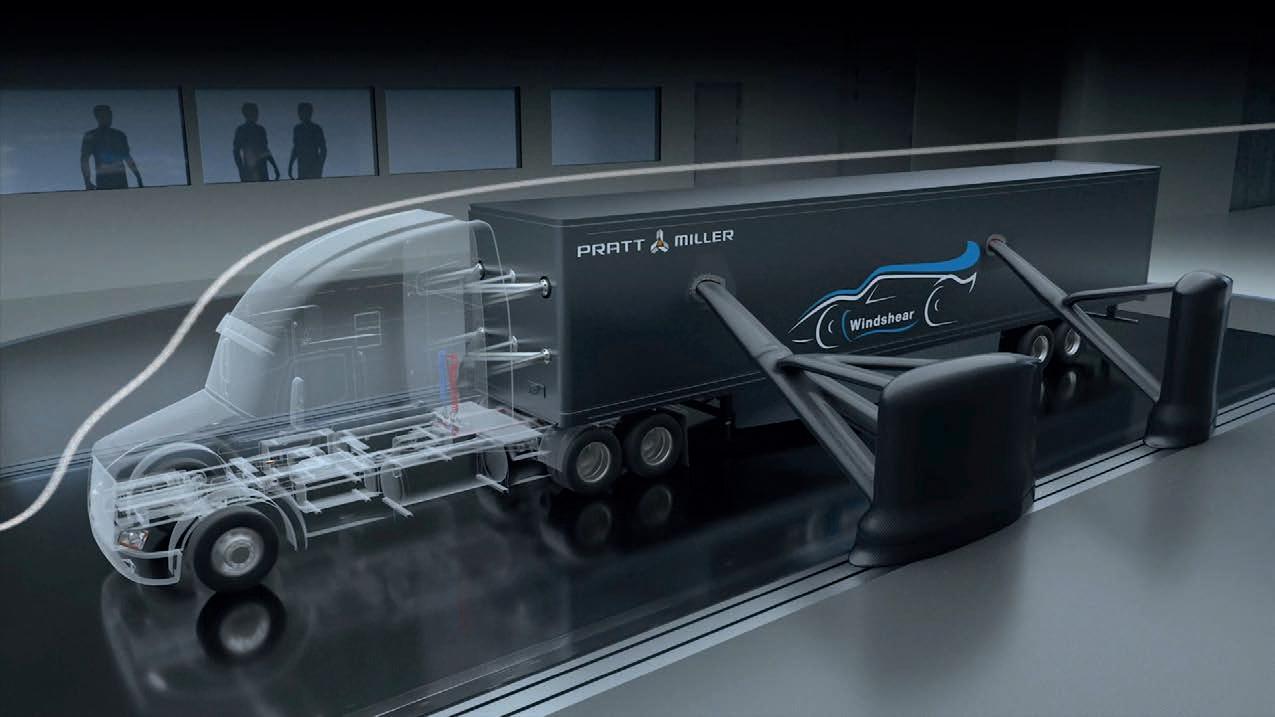
‘The main reasons for making a new gearbox were to have proper pick-up points for the suspension to optimise the kinematics. Second was packaging of the suspension, and the third was matching the gearbox with the engine,’ says Cannizzo. ‘Everything required a different gearbox specification. We were forced [to do this]. Initially, we tried to start from an existing transmission for reliability. Not GT3, because it is a different specification. We used the experience of the GT3, but were forced to make a number of changes, first of all because of the suspension.’
Ferrari was similarly tight lipped about the hybrid system it has developed for its car. By regulation, a manufacturer competing with a hybrid LMH must have a frontmounted MGU-K, turning the car into a four-wheel-drive car at a certain speed.
All that could be said was that the high voltage battery and the control systems were developed in conjunction with the Formula 1 team but, due to application differences, there was not much crossover of information.
‘The battery is collecting the experience from Formula 1,’ confirms Cannizzo, ‘but the system is completely different. We have four-wheel drive with one electric motor, and Formula 1 is different. But in terms of controlling the electronics, yes, there is definitely some crossover.’
Due to the convergence between LMH (a ground-up design) and LMDh (commercially available chassis, spec hybrid system), the four-wheel-drive function has been castrated to the point that it is almost not worth having. That was a deliberate move by the rule writers as they had to create a condition where the two concepts have equal chance to win.
The LMDh concept featured a cockpitadjustable front anti-roll bar and so, with the hybrid system changed to an open diff’ and deployment speed set high, this was also introduced to the LMH car. As the change came late, many of the LMH manufacturers, including Ferrari, had to retrospectively find room for it.
‘It has made our life more complicated,’ admits Cannizzo. ‘It happened at a later stage, which is not easy to manage when you are designing a car. I hope the regulation will stabilise and, of course, we have implemented this adjustable anti-roll bar and will try to understand if we can get some performance from it, but there are more important areas.
‘It would have been better to ban the adjustable [anti-]roll bar in the LMDh category. That would have been easier because we would not have had to spend money to put it in, and for them it would be cost free to take it out, or even cheaper. But, no problem, in the end we will cope with it.’
Homologation will be complete by the end of December 2022, and the car will debut at Sebring in March, 2023.
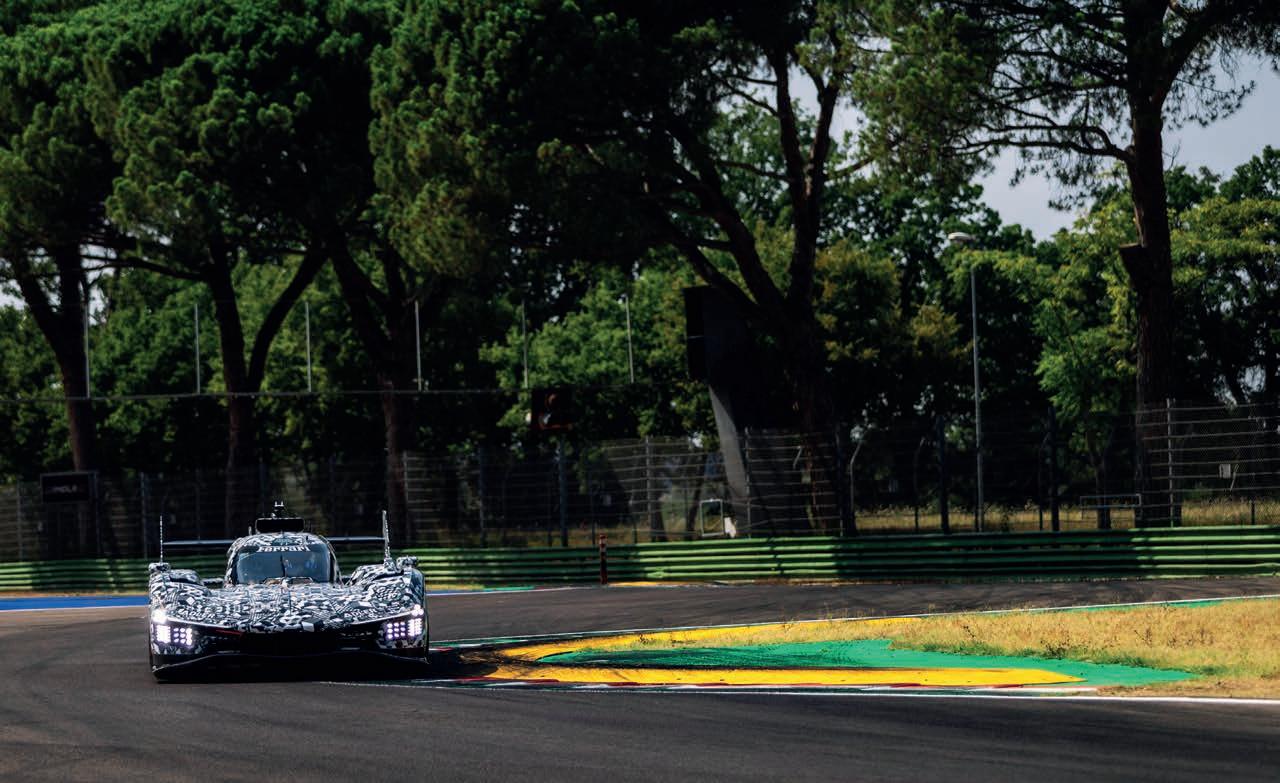
RE How was it making the transition from GT to LMH? ‘What was more surprising was a GT and an LMP2 test to get used to the downforce. That was a lot different. Going from GT to LMH, there were a lot of similarities. It works in the same way, just with a lot more power and a lot more downforce. You also have more things that you need to do on the steering wheel.
‘Going to the LMH, it was five to six laps and you are there, so it is hard to compare lap times. That said, I feel we are all adapted well and all on the limit.’
RE Tell us about the power delivery from the hybrid ‘Activation comes in at 190km/h, so really late. It comes in for the majority of the time in a straight line, and the transition is smooth. You can only really feel it because you hear the noise of the motor coming in, the whistle. Going through the high-speed corners, you can feel it kicking in because you feel the torque on the steering wheel, but it doesn’t affect anything really. It has its advantages of course, but in terms of pure traction it doesn’t make a difference.’
RE Does it change car behaviour on the brakes?
‘Yes. For me, it’s a good thing with the regen’ into the corner. If it is set up well it works really well, but it’s hard to set up. It is beneficial, and the whole idea of the hybrid is to save fuel and be more efficient. During the test we try different combinations and, honestly, the difference between hydraulic and combustion, having the regen’ and the acclimation of the energy in terms of balance, it is not a big thing.’
RE Are you used to the downforce from formula racing?
‘It has a lot of downforce, but it is also quite heavy, so that’s unlike a single seater. You feel the downforce, but it’s a nice feeling. After a few years in GT, you think you have gone in too quick, but it just grips. With the higher downforce cars, it’s harder to reach the limit because when they go, they just go. It’s a nice car.’
RE But it looks like an F1 tub with two seats and a roof… ‘It is between a GT car and a single seater in terms of seat position. You are more laid back with your feet higher up, and we have carbon brakes, which is quite a difference. It is slightly different, but it is not a massive thing to get used to. It is not like GT to F1. It is a chunk quicker on a lap, but you get used to it quickly.’
RE How is the vision from the cockpit?
‘Good. It is a bit better than a GT. We have proper seats, which you don’t in a GT. There you get a bit of foam and hope you don’t move around too much. This is a nice position, comfortable due to the seats and things. You don’t see any more than in an LMP2, but you see well. You can see out of the mirrors and see around.’
The high voltage battery and the control systems were developed in conjunction with the Formula 1 team